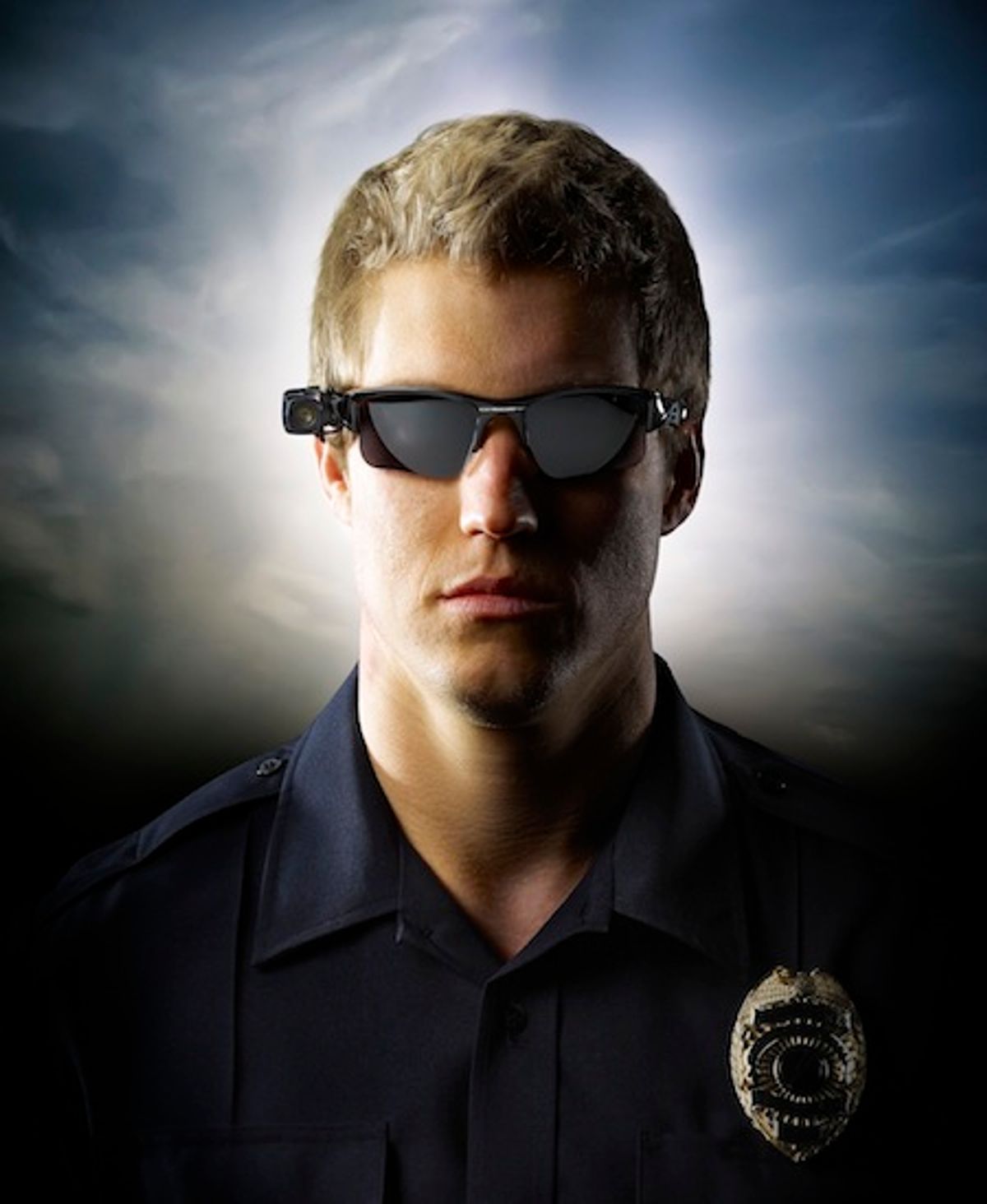The new Axon Flex camera can clip onto a police officer's baseball cap or sunglasses and operate continuously for up to 12 hours, according to a feature article by The Verge that coincided with the camera's official debut on 5 April. But the camera only begins active audio-and-video recording when the officer presses a small button on the control unit. The captured footage includes 30 seconds of video (without audio) from before the button is pressed.
Any recordings get uploaded to a website called Evidence.com when the officer plugs his Axon Flex control unit into a docking base. That allows officers and administrators (high-ranking officers) to label and edit video files, even as the system records the user's login information and tracks the time he or she worked on the file. Video recordings stay in the system for only 180 days before being erased, unless they are used as evidence.
Such cameras could pay off for police departments by providing huge cost savings when defending against lawsuits, said Scott Greenwood, a national civil rights lawyer based in Cincinnati, Ohio, in an interview with The Verge. On the other hand, Greenwood envisioned a new world where judges would only consider police officer testimony when the officers could provide video to back up charges against defendants.
The new Axon Flex camera helped the Rialto Police Department in California dramatically reduce the number of "use-of-force incidents" and complaints during a yearlong trial that began on 13 Feb. 2012, according to a new study touted by Taser International. Chief Tony Farrar of the Rialto Police Department conducted the study as part of his graduate degree thesis at Cambridge University in the UK.
But turning every police officer into a walking version of the show "Cops" also comes with privacy risks and possible abuses of power. Greenwood emphasized that police departments must set up guidelines that let officers know when they should or should not use the cameras. For instance, police officers might be instructed to always turn the camera on when responding to certain scenarios, but would otherwise leave the cameras off to avoid extending police surveillance to ordinary citizens in normal circumstances.
Taser's venture into the new world of policing comes at a time when its fortunes have continued to rise and fall based on the controversy surrounding its flagship stun gun product. The stun gun's huge success in lowering the number of lethal confrontations between police officers and suspects has been marred by safety concerns surrounding a string of deaths and alleged cases of police brutality over the past years. If Taser's Axon Flex camera can encourage better policing and discourage abuse of both non-lethal and lethal force, everyone might end up feeling safer in the end.
Images: Taser International
Jeremy Hsu has been working as a science and technology journalist in New York City since 2008. He has written on subjects as diverse as supercomputing and wearable electronics for IEEE Spectrum. When he’s not trying to wrap his head around the latest quantum computing news for Spectrum, he also contributes to a variety of publications such as Scientific American, Discover, Popular Science, and others. He is a graduate of New York University’s Science, Health & Environmental Reporting Program.




